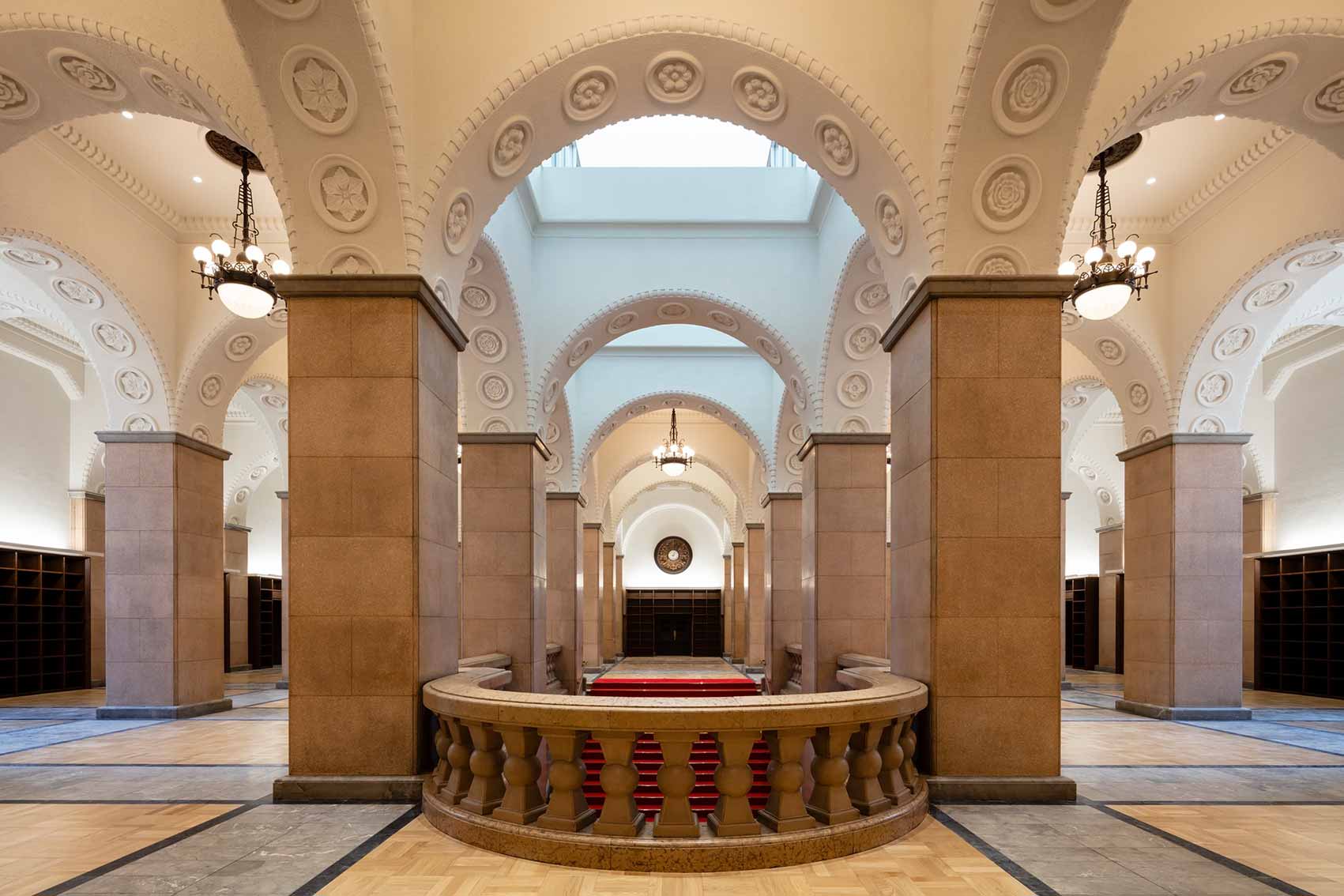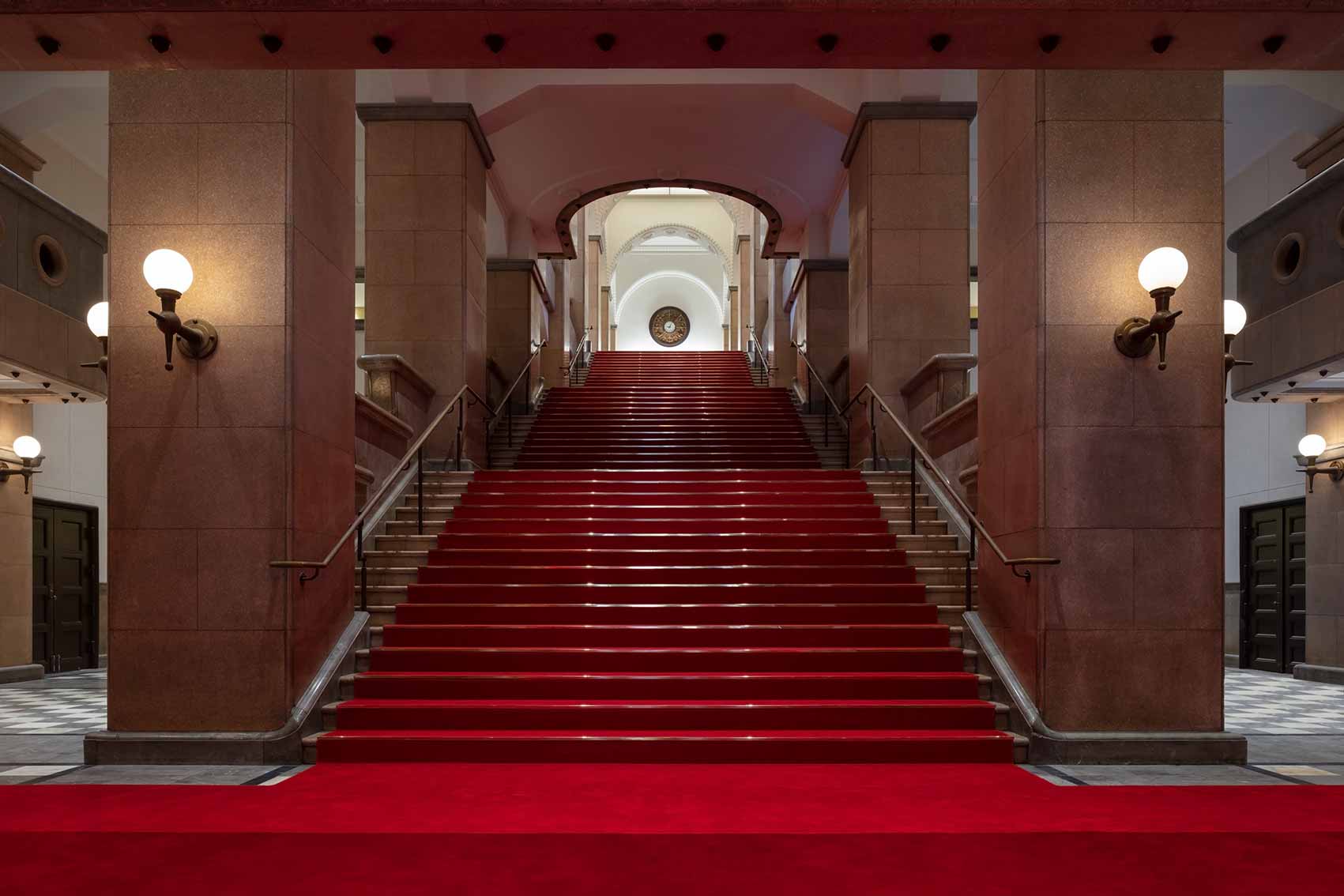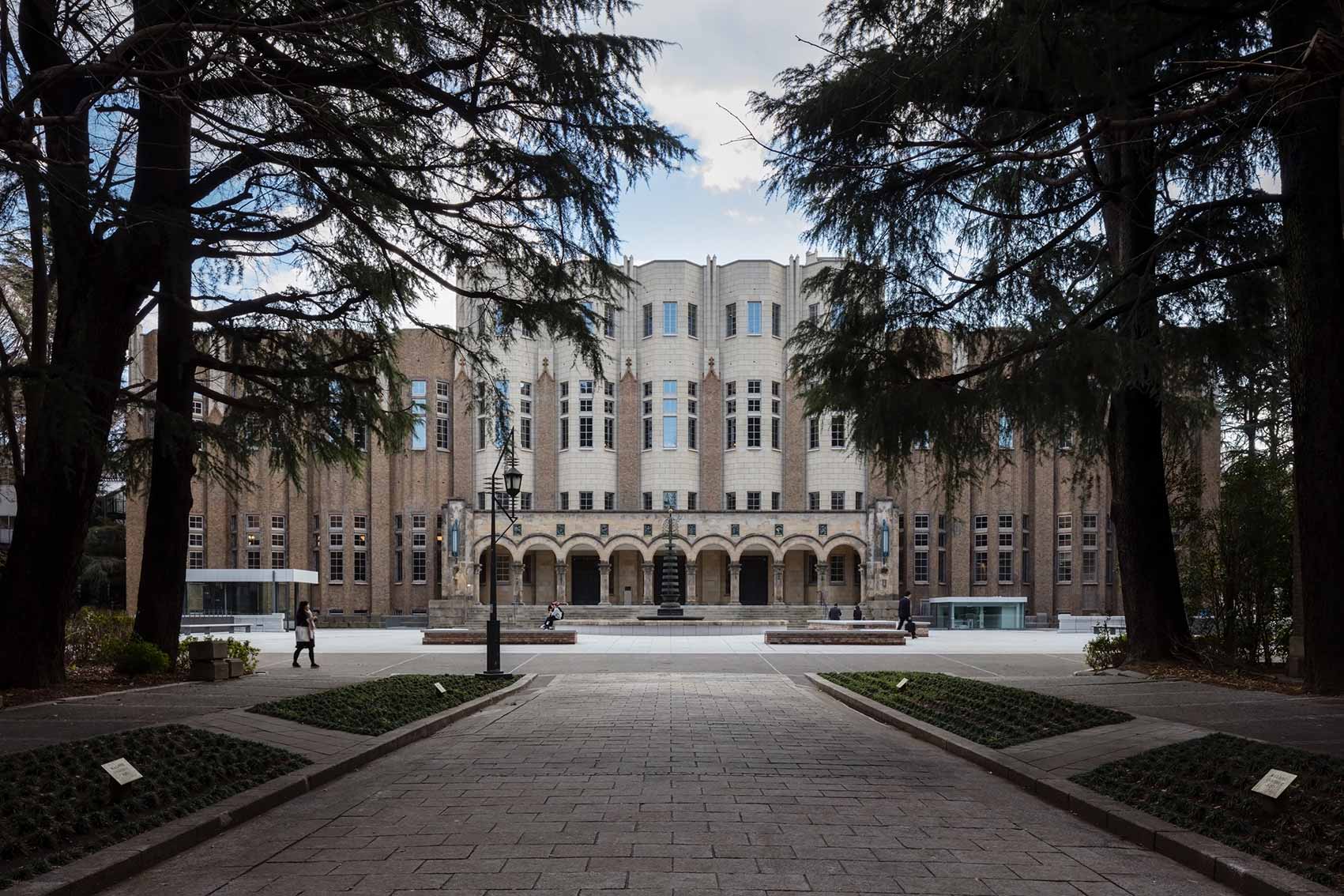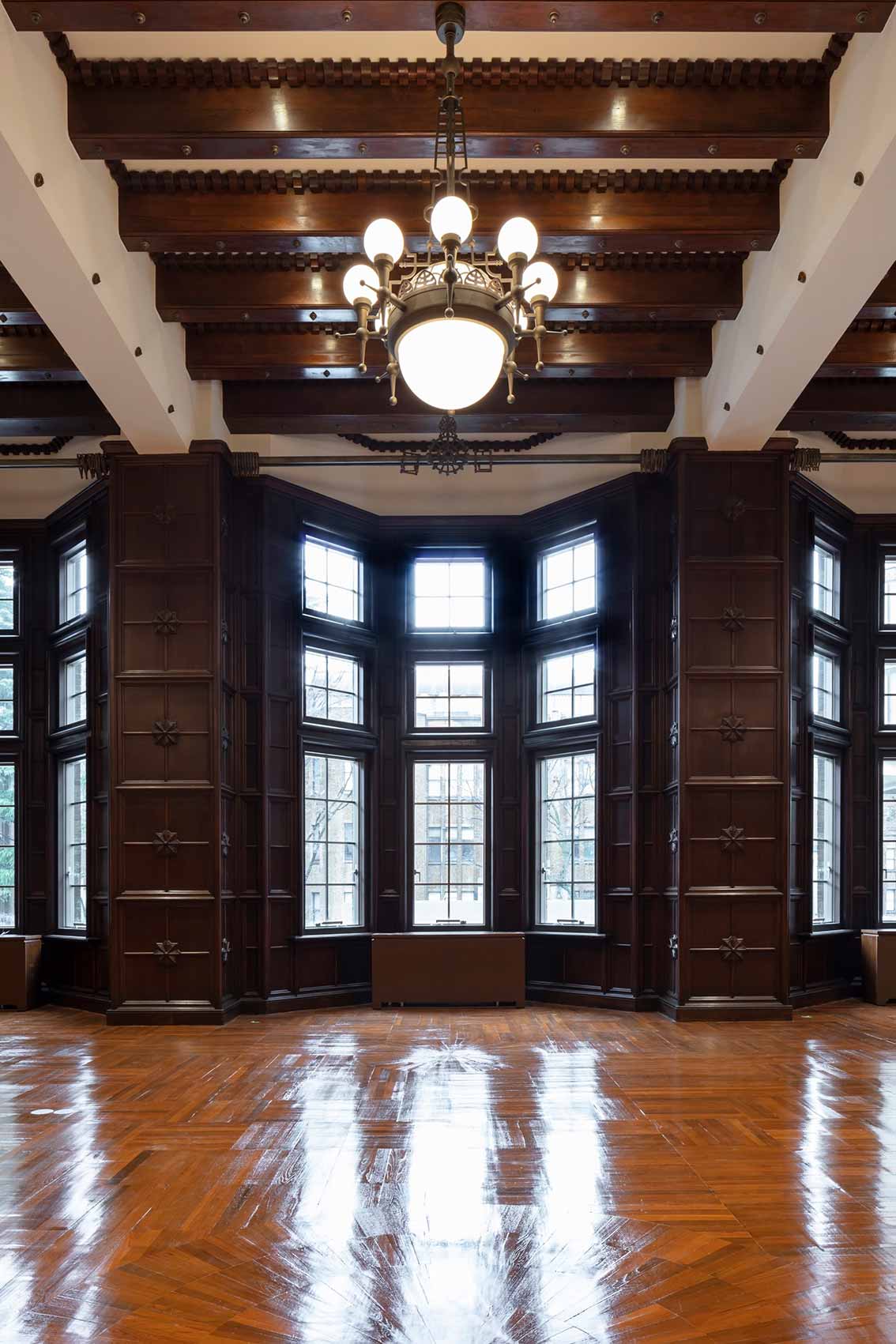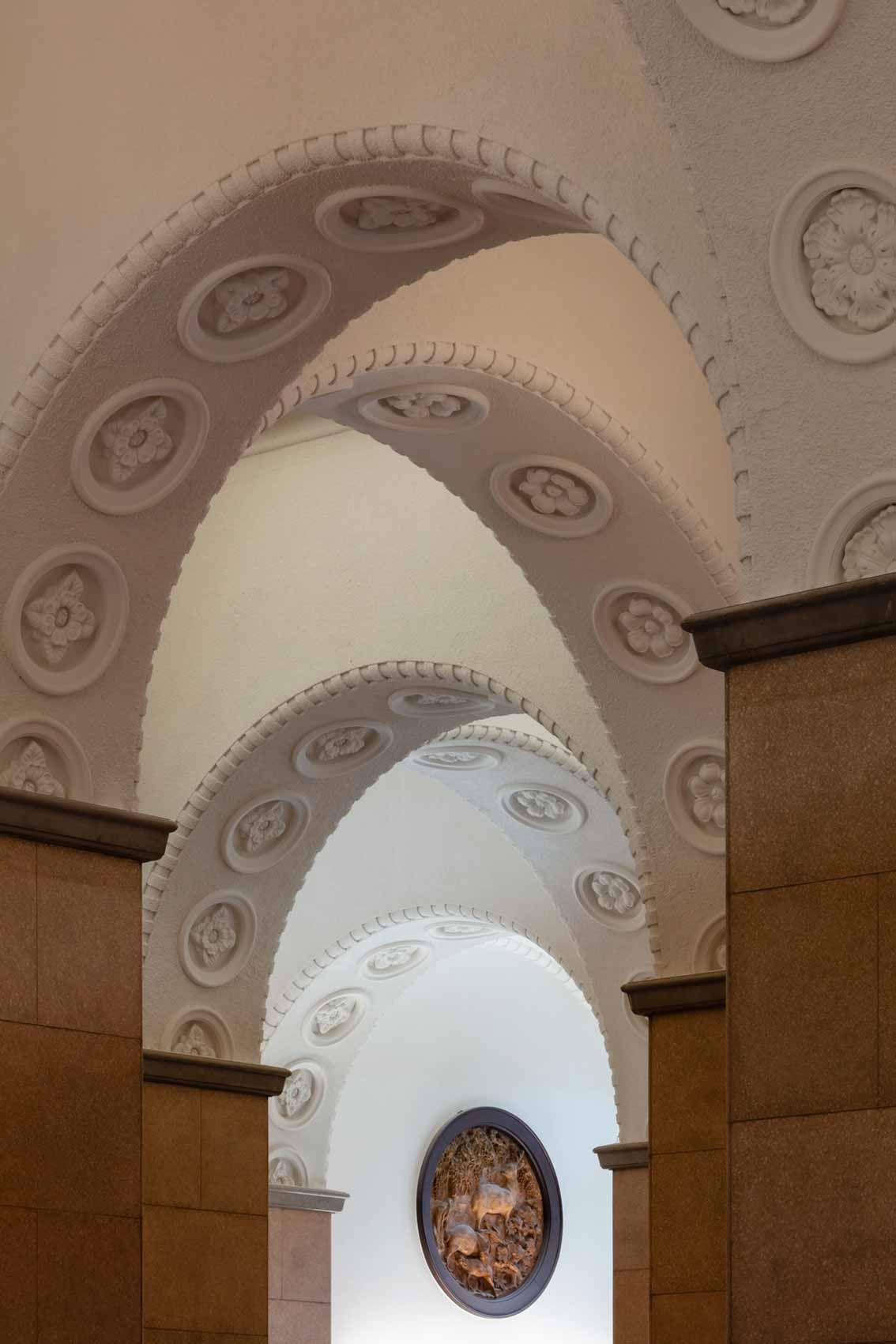東京大学 総合図書館 改修
General Library of the University of Tokyo
2020
設計監修 | 東京大学キャンパス計画室(野城智也・川添善行)・同施設部
実施設計 | 香山壽夫建築研究所
構造設計 | 万建築設計事務所
設備設計 | 総合設備コンサルタント
施工 | 清水建設株式会社
敷地面積 | 402,682.18m2
延床面積 | 18,586.39 m2
階数 | 地下2階 地上5階
構造 | SRC造 一部RC造S造
工期 | 2015年9月〜2020年8月
撮影 | 小川重雄
本郷キャンパスは、内田祥三氏が関東大震災からの復興の過程で設計した一連の建築物による特徴的な景観を有している。ネオゴシックとスクラッチタイル、樹木の軸線という、形態・素材・外部空間を組み合わせた設計手法は、群を生み出す方法論として現在でも色あせない。本学のキャンパス計画において、本建物は景観を構成する重要建築物と指定されている。いうまでもなく、キャンパスという全体は、個々の建築のデザインの集積でしか生み出すことができない。外壁タイルの全数調査などに基づく徹底的な保存・復原・復元によって、今後のキャンパスデザインの水準を決めるような部分としての役割に徹している。
一方、1928年の創建以来の学生数の増加や学習環境の質的変化、ライブラリアンという職能の更新など、総合図書館を取り巻く環境は大きく変わった。耐震改修だけでなく、機能的更新が必要になっていた。しかし、総合図書館は、内田氏の意図した内部の空間構成が現存する建築物でもある。東京都公文書館に保存されていた手描き図面の収集や、ガラス乾板に保存されていた竣工当時の写真の確認など、創建当時の様子がわかる資料を手当たり次第に収集した。その上で、それぞれの部屋やエレメント毎に、何を残し、何を復元し、何を変更するのかを判断する。例えば、大階段の赤絨毯は、創建当時のものではないが、教員や学生の思い出に強く残っているものだからこそ、創建時のデザインに拘泥せず、「創建後」のデザインを採用した。内田氏の設計を原点と定め、その原点に近づくこともあれば、原点からの距離を意識化して現代性へ肉薄したものもある。原点からの距離を意識化することが、原点へのリスペクトだと考えた。
今回の工事が完了したことで、3年前に完成した総合図書館別館とも空間的に接続した。図書館内部の空間を体験したあと、地下の書庫から噴水の下を通って、広場に出てくると、内部にいたはずの自分がいつの間にか、外に出てくるという不思議な空間体験がある。1928年から2019年までの時の繋がりが、内部と外部の関係が入れ替わるような空間のシークエンスを生み出している。
The Hongo Campus is characterized by a distinctive landscape created by a series of buildings designed by Yoshikazu Uchida during the post–Great Kanto Earthquake reconstruction. His design methodology—combining form, material, and external space through Neo-Gothic architecture, scratch tiles, and tree-lined axes—remains a timeless approach to producing architectural ensembles. In the university’s campus master plan, this building is designated as an important structure in shaping the campus landscape. Needless to say, the campus as a whole can only emerge as the accumulation of the designs of its individual buildings. Through exhaustive preservation, restoration, and reconstruction work—including a complete survey of the exterior tiles—this building has taken on the role of setting the benchmark for future campus design.
At the same time, since its completion in 1928, the environment surrounding the General Library has changed significantly: the number of students has increased, learning environments have evolved, and the role of librarians has been redefined. Beyond seismic retrofitting, functional updates were required. However, the General Library is also one of the few remaining buildings that preserves Uchida’s original interior spatial composition. We collected as many historical resources as possible to understand its original condition—hand-drawn drawings preserved at the Tokyo Metropolitan Archives, and glass-plate photographs from the time of completion, among others. For each room and architectural element, we carefully determined what should be preserved, what should be restored, and what should be altered.
For example, the red carpet on the main staircase is not part of the original design, yet it remains strongly embedded in the memories of faculty and students. We therefore chose not to adhere rigidly to the original, but to adopt a “post-original” design. Uchida’s design was set as the point of origin: in some cases, we sought to approach this origin as closely as possible; in others, we consciously kept a distance from it in order to pursue contemporary expression. We believe that making this “distance” from the origin explicit is, in itself, a form of respect for it.
With the completion of this project, the building has been physically connected to the General Library Annex, which was finished three years earlier. After experiencing the library’s interior, one can pass through the underground stacks, beneath the fountain, and emerge into the plaza—creating the curious sensation of finding oneself outside after having been inside only moments before. The continuity between 1928 and 2019 produces a spatial sequence in which the relationship between interior and exterior is subtly inverted.
